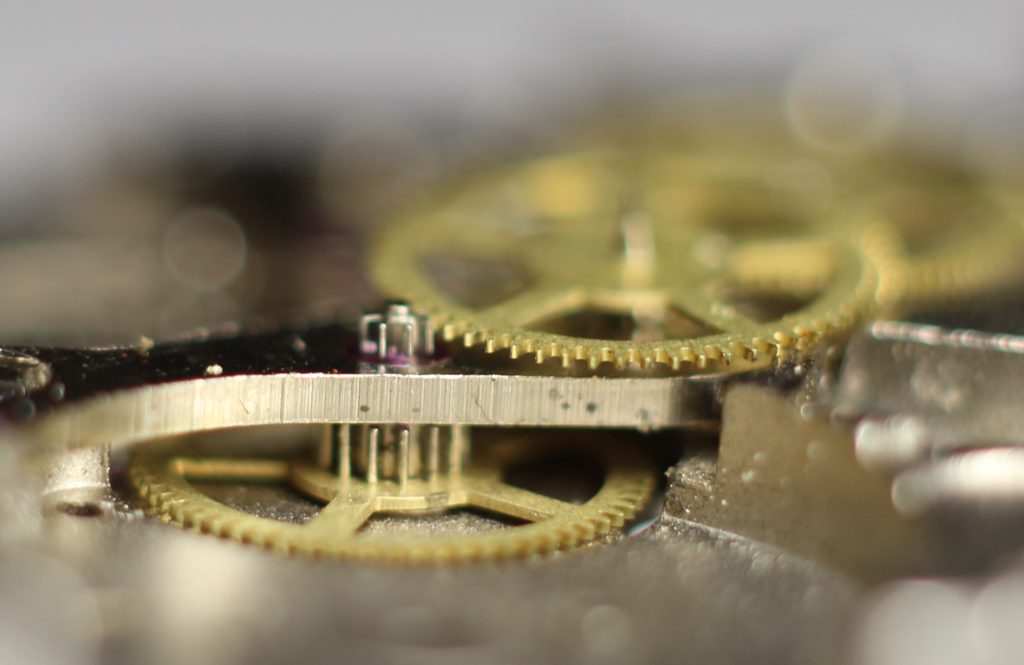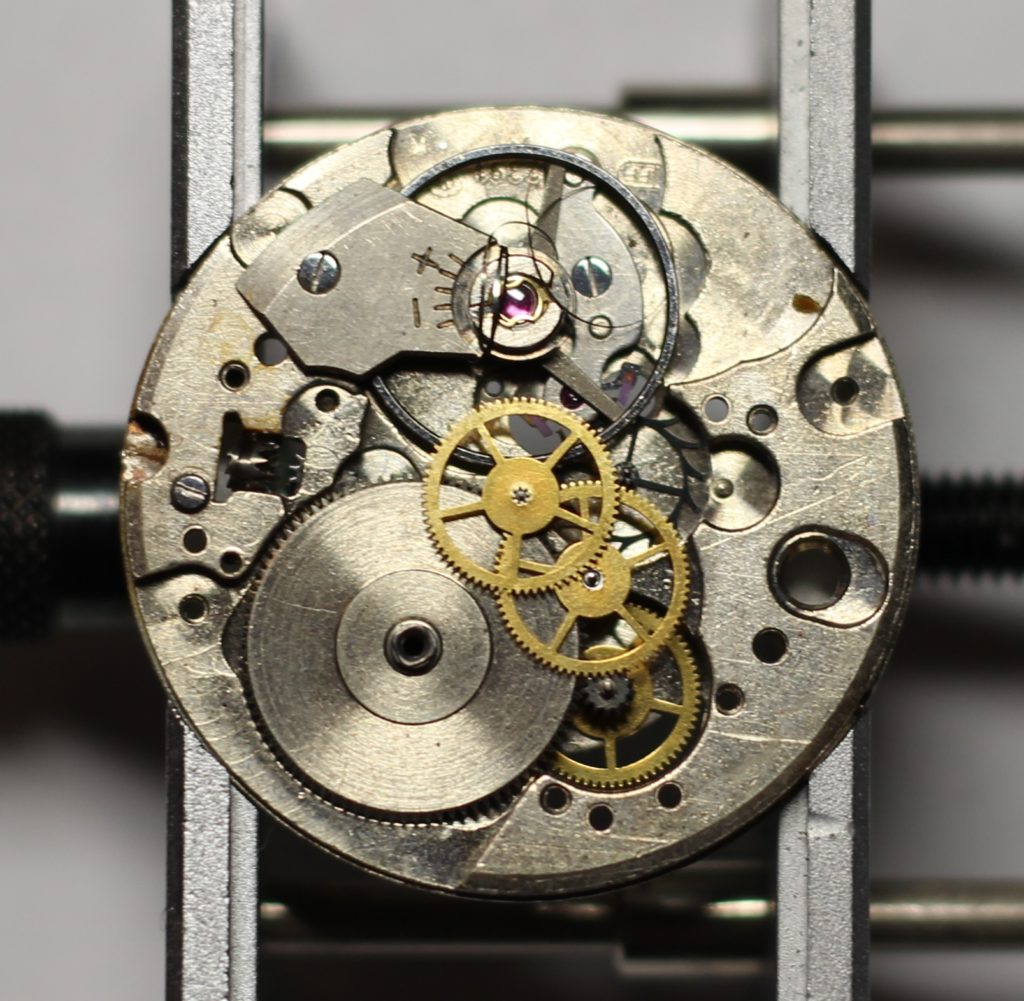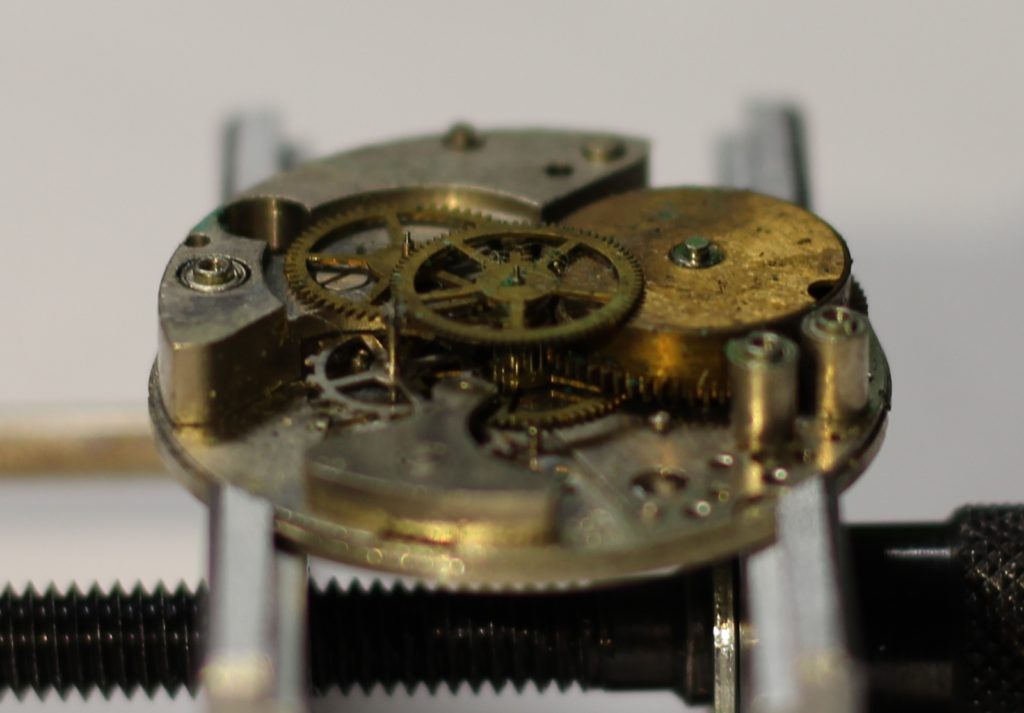The invention of the wristwatch, with its far smaller size, has made the centre seconds a key component to improve legibility.
The historical evolution and theoretical solutions are well presented in the Timezone article by Walt Odets divided in part 1 and part 2. Unfortunately many of the images have been deleted and the link between the two parts does not work, but the text is interesting and the technical plans are very helpful.
There are essentially 3 solutions to the “problem” of centre seconds:
- Indirect seconds (direct minutes)
- Indirect minutes (direct seconds)
- Direct minutes and seconds (fourth and centre wheels one above the other)
Indirect seconds
This was the most obvious technical choice when modifying a traditional design with subsidiary seconds as the centre wheel and fourth wheel stayed in their places and a wheel was added to bring the seconds back to the centre. The downside was that the seconds movements was not as smooth.
As illustrated here, a pinion at the centre of the movement carries the seconds hand. This pinion is driven by the third wheel, which means it must have the same number of leaves as the fourth pinion (if the fourth wheel turns once per minute). The seconds pinion is not connected to the centre wheel but passes through it.
Indirect minutes
In this example, the fourth wheel is at the centre and the main (former centre) wheel is at one side. The pinion of the third wheel is driven by the centre wheel, but also drives the friction wheel on the dial side. The friction wheel drives the cannon pinion during normal operations, but slips when the cannon pinion is being directly moved by the intermediate wheel during time setting, thus protecting the movement.
Direct minutes and seconds
Walt Odets explains how Patek Philippe with caliber 27SC invented a new design with the fourth and centre wheels on the same axis, allowing both minutes and seconds to be directly driven. Luckily for us, a cheap EB 1443 movement with pin lever also has the same construction and this is the one I use to illustrate this design.
The drawback of this system is quite clear if you compare the ETA/Peseux 7001, which, like the EB 1443 is hand wound and has a diameter of 23.3mm, but has subsidiary seconds. The 7001 is 2.5mm thick whereas the 1443 is 5mm thick, exactly double!



